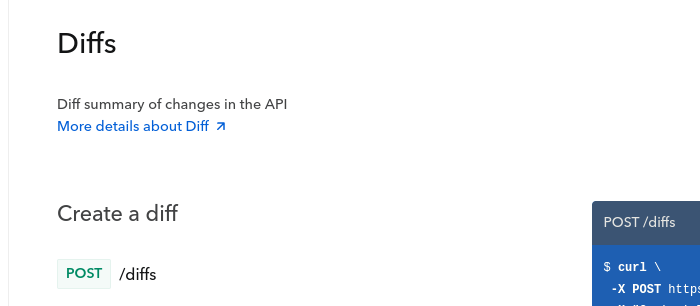External Documentation
While the description property is excellent for giving a little more information about a specific tag, you might need to provide additional documentation if the business logic by a part of the API is complex, or there are lists of possible values defined outside of the API.
If anything requires further explanation, you can provide a link to an external web page where you offer a more detailed explanation using the externalDocs property.
The externalDocs property is two things, a URL using the url property, and a description explaining what this link is about.
tags:
- name: Diffs
description: Diff summary of changes in the API
externalDocs:
description: More details about Diff
url: https://docs.bump.sh/help/api-change-management/
This is not limited to tags, externalDocs can be used on:
- Root Object
- Tag Object
- Operation Object
- Schema Object
Here’s all of them being used all at once!
openapi: 3.1.0
info:
title: External Docs Everywhere!
version: "1.0.0"
externalDocs:
description: Guides & Tutorials
url: https://docs.bump.sh/guides/
paths:
/diffs:
get:
externalDocs:
description: Learn more about Operations
url: https://docs.bump.sh/guides/openapi/specification/v3.1/understanding-structure/paths-operations/
tags:
- name: Diffs
description: Diff summary of changes in the API
externalDocs:
description: More details about Diff
url: https://docs.bump.sh/help/api-change-management/
components:
schemas:
Diffs:
externalDocs:
url: https://docs.bump.sh/guides/openapi/specification/v3.1/data-models/schema-and-data-types/
When you generate API documentation for the API description above, you’ll see the link rendered like this:

